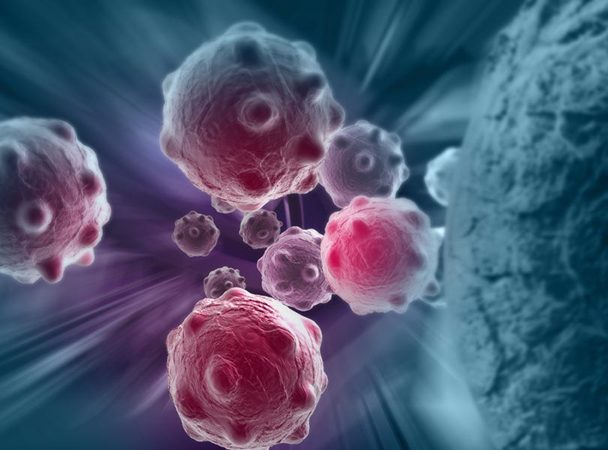There is a lot of confusion about how laser therapy, and its mechanism of action, photobiomodulation, interacts with cancerous lesions and tumor growth. While multiple studies over the years provide evidence that laser therapy can be a benefit in relieving symptoms associated with chemotherapy treatments, such as in the case of oral mucositis (Bjordal, Bensadoun, et al) and lymphedema (Baxter, Liu, et al), does it increase or decrease the proliferation of the cancerous cells themselves? The answer to that question is obviously critical if there is to be any advancement of laser therapy as a treatment for cancer.
This month, a systematic review paper was published in the journal Lasers in Medical Science, covering a broad array of wavelengths and power levels. The paper looked at 19 studies in total, and presented those results based on evidence of proliferation of cancerous cells, or inhibition. (da Silva, Silva de Oliveira, et al)
Somewhat unsurprisingly, each variation in wavelength and power density of laser energy led to different results. For example, with infrared wavelengths (>750mW, most commonly used in laser therapy), four studies showed a decrease in cell proliferation of cancerous tissue, while three others showed an increase. So yes, the good news is that laser therapy can decrease the cell proliferation of cancerous lesions, but it depends greatly on the specific parameters used. Get the parameters wrong and you may in fact do the opposite, and stimulate the growth of cancerous cells/tissues.
In 2018, one study that looked at laser therapy’s effects on squamous cell carcinoma showed proliferation of the cancerous cells in a dose dependent manner (Bamps, Dok, et al). Another 2018 paper showed proliferation of isolated osteosarcoma and carcninoma cells with a defined dose, power and wavelength of laser therapy, showing the increase tracking along with increased applications of laser (Kara, Selamet, et al). These results mean we must use caution in choosing whether to use laser therapy when treating cancer patients, for any reason.
The papers reviewed in the above referenced systematic review paper do hint at exciting possibilities that are worth noting. In the search for a therapy for malignant glioblastoma, a particularly aggressive form of brain cancer, Murayama used 808nm infrared (the same wavelength used with Respond Systems’ lasers) and measured the effect on markers that indicate proliferation of cancerous cells. The researchers reported a decrease in the number of calcein-AM-positive cells, suggesting that the laser stimulated a decrease in cancer cell proliferation (Murayama, H. et al).
So what does the future hold as it relates to laser therapy and cancer?
Despite how eager we might be to jump ahead with the idea that laser therapy can assist cancer patients, for now we need to stick to the specifics of what we know from the research. Caution should be the rule when using laser therapy with cancer patients, at least and until more studies are performed that give a clearer view.
And then there is the path of researching the potential protective or immune defense capabilities laser therapy may provide in deterring the formation of cancerous cells in the first place.
The future holds much promise and there will be much more to come as the research continues!
Bjordal, J.M., R.J. Bensadoun, J. Tuner, L. Frigo, K. Gjerde and R.A. Lopes-Martins. “A systematic review with meta-analysis of the effect of low-level laser therapy (LLLT) in cancer therapy-induced oral musositis.” Support Care Cancer 19.8(2011): 1069-1077. Online.
Baxter, G.D., Liu, L., Tumilty, S., Petrich, S., Chapple, C. and J.J. Anders. Low level laser therapy for the management of breast cancer related lymphedema: A randomized controlled feasibility study.” Lasers in Surgery and Medicine 50:9 (2018): 924-934. Online.
Da Silva, J.L., A.F.S. Silva De Oliviera, R.A.C. Andraus and L.P. Maia. “Effects of low level laser therapy in cancer cells- a systematic review of the literature.” Lasers in Medical Science June 17 (2019): Online ahead of print.
Bamps, Marieke, Ruveyda Dok and Sandra Nuyts. “Low-Level Laser Therapy Stimulates Proliferation in Head and Neck Squamous Cell Carcinoma Cells.” Frontiers in Oncology 8.343 (2018). Online.
Kara, C., H. Selamet, C. Gokmenoglu, and N. Kara. “Low level laser therapy induces increased viability and proliferation in isolated cancer cells.” Cell Proliferation 51.2 (2018): 12417. Online.
Murayama, H., K. Sadakane, B. Yamanoha, and S. Kogure. “Low power 808-nm laser irradiation inhibits cell proliferation of a human derived glioblastoma cell line in vitro.” Lasers in Medical Science 27.1 (2012): 87-93.








